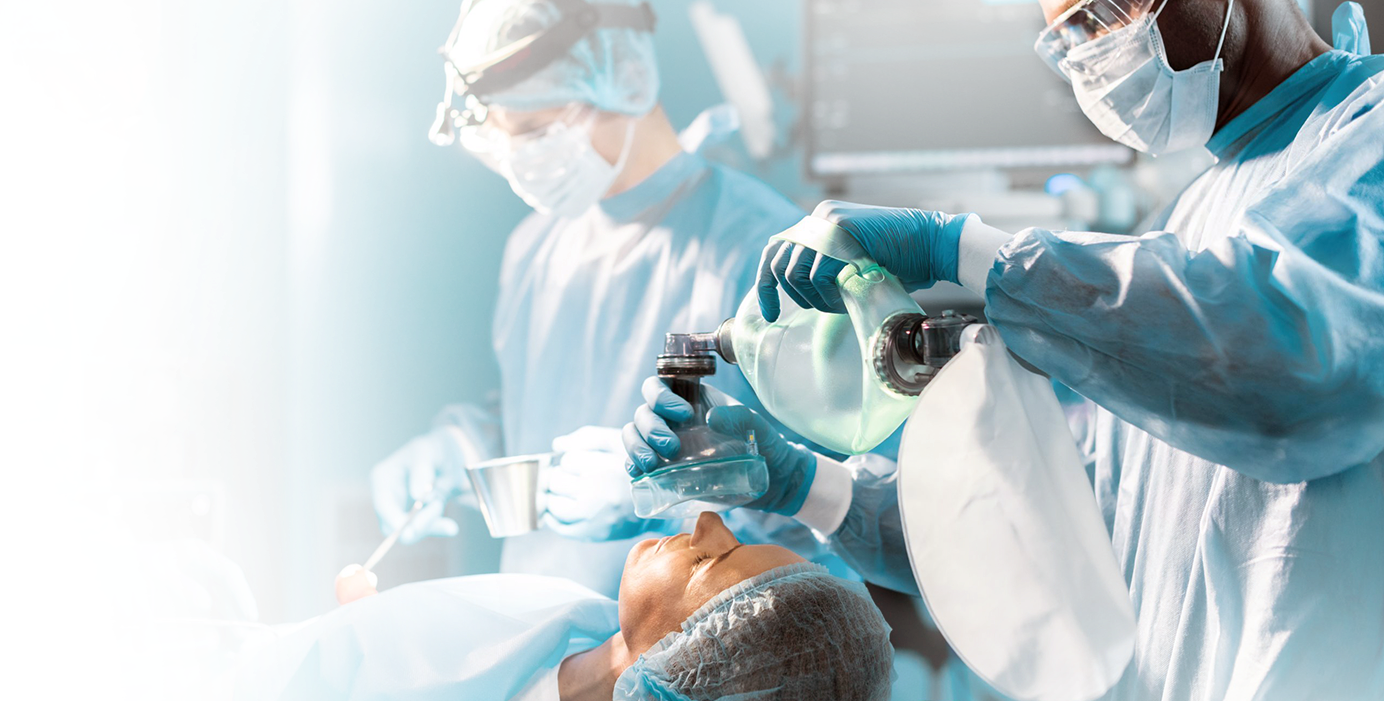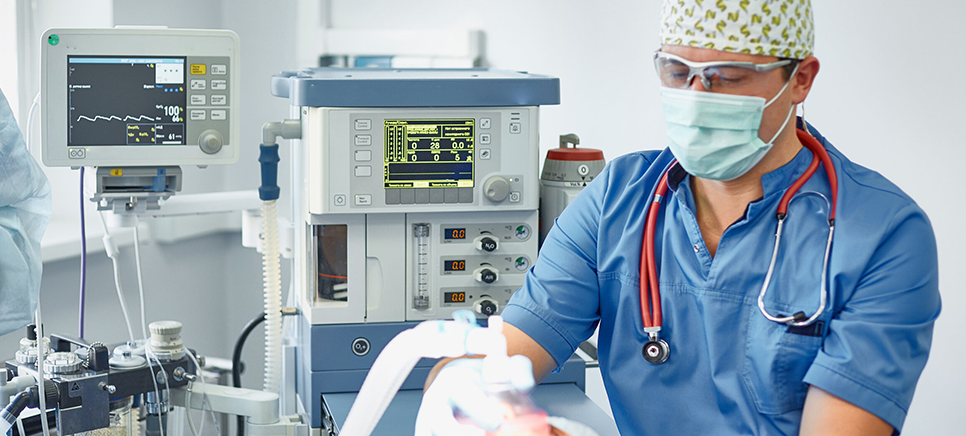The lymphatic system is a network of vessels, nodes, and ducts that pass through nearly all bodily tissues and play a critical role in your immune system. The lymphatic system is responsible for transporting a clear, colorless fluid known as lymph, which contains the white blood cells that clear toxins and waste from your body’s cells. When this fluid builds up in your body, it can lead to a chronic condition known as lymphedema.

Lymphedema Tests & Procedures

Testing, Diagnosis & Lymphedema Treatment

Diagnosing Lymphedema
Lymphedema is characterized by significant swelling of part or all of the arm or leg, including fingers and toes. If left untreated, this swelling can progress, restricting range of motion and impairing your ability to perform everyday activities. A thorough diagnosis can help pinpoint the type of lymphedema a patient has and the cause of the condition.
- Primary lymphedema is congenital and has no direct cause other than hereditary genetic mutation that leads to a malfunction of the lymphatic system.
- Secondary lymphedema most often results from injury or obstruction of the lymphatic system, including cancer, cancer treatments, obesity, infection, and trauma.
Imaging tests may be used to diagnose cases of lymphedema that are not immediately obvious. These tests may include:
- MRI scans use magnetic fields and radio waves to produce a 3D, high-resolution image.
- CT scans use X-ray technology to produce detailed, cross-sectional images and reveal blockages in the lymphatic system.
- Ultrasound tests use sound waves to produce images and help find obstructions within the lymphatic system.
- Lymphoscintigraphy tests use a radioactive dye which is injected and then scanned by a machine to reveal images of the dye moving through the lymph vessels.
Lymphedema Treatments
Traditional lymphedema treatments work to slow the inevitable progression of this condition, but most interventions are not considered cures. Our advanced lymphedema surgical procedures can eliminate the need for ongoing treatments, improve mobility that was previously lost, and, in some cases, completely eradicated lymphedema.
Non-Invasive Treatments
Medication & Therapy
Often, patients are prescribed antibiotics to treat skin infections. Therapy may also be recommended. Complete decongestive therapy (CDT) is a non-surgical treatment plan that includes multiple techniques, incorporating lymphatic draining, compression bandages, certain exercises, and skin care to reduce swelling.
Surgical Procedures for Lymphedema
The surgical team at The Institute for Lymphatic Surgery and Innovation treats both primary and secondary lymphedema with advanced procedures, including:
Lymphaticovenous Anastomosis
Lymphaticovenous anastomosis (LVA) is an advanced microsurgical procedure that creates alternate routes for excess lymphatic fluid to move out of the affected limb. LVA is a minimally invasive procedure that connects the lymphatic vessels to veins in the affected area using a microscope and microsurgical tools. Because it is minimally invasive, LVA surgery can be done either outpatient or over a one-night inpatient stay.
The side effects of LVA typically include bruising, skin staining, and possible infection. Recovery for this type of minimally invasive procedure is faster than more invasive types of surgeries, and patients typically experience a decrease in swelling, increased comfort, and decreased need for compression garments after recovery.
Free Lymph Node Transfer
Free lymph node transfer is a surgical procedure where lymph nodes are harvested from one area of the body and transferred to the areas where lymph nodes have been damaged or removed to improve drainage. This procedure “borrows” lymph nodes from an unaffected area of the body and transplants them along with a blood supply to the affected area using microsurgical techniques. Lymph node transfer surgery is typically in-patient and may require a 1- to 3-day stay.
The risks and side effects of a lymph node transfer are rare, but may include vascular compromise that leads to tissues losing their viability, or donor site-associated lymphedema. Recovery time can take 4 to 6 weeks. Expect to work with an occupational or physical therapist in order to get back to your lymphedema therapy quickly to keep swelling down. Some patients will improve quickly (within a matter of weeks) while others may take a few months to a full year to recover. Results can include a reduction or elimination of compression garments, limb volume, and pain/ discomfort, and improvements in limb suppleness and quality of life.
Lymphedema Liposuction
Lymphedema liposuction is a minimally invasive technique used to remove excess fat and scar tissue. Lymphedema liposuction is often performed in combination with lymphaticovenous anastomosis (LVA) or lymph node transfer procedures. Liposuction for lymphedema works by removing excess fat caused by lymphedema in an affected area (when lymphatic fluid spills into surrounding tissues, it can stimulate the growth of fat stem cells).
Liposuction is an out-patient procedure with side effects including bruising, swelling, redness, or discomfort. If your liposuction is combined with another lymphedema surgical procedure, it may become an inpatient stay. The recovery time for liposuction is typically around 4 to 6 weeks, after which point surgical swelling should go down and you should be able to see visible results of a reduction in mass from the affected area.
Lymphedema Mass Excision
If lymphedema has resulted in a mass hanging from the inside or outside of a patient’s thigh, a lymphedema mass excision procedure can be done to surgically remove the mass and make walking and movement of the leg easier. This type of procedure is a more radical debulking procedure compared to liposuction, involving the removal of damaged skin and fat from the affected area down to the muscle, and a skin graft to transplant skin from an unaffected area. Lymphedema mass excision is typically performed on patients with advanced lymphedema.
The risks of a mass excision procedure are higher than that of liposuction, and can include bleeding (hematoma), necrosis of the grafted skin, infection, delayed wound healing, blood clots, scarring, and a recurrence of lymphedema. This intensive inpatient procedure typically requires a hospital stay, with an in-hospital recovery period of weeks to months. Some patients may require blood transfusions or additional surgeries.
Breast Reconstruction with Lymphedema Surgery
For lymphedema patients who have had a mastectomy, breast reconstruction can be performed at the same time as one of the above-mentioned lymphedema surgical procedures. Breast reconstruction uses a woman's own tissues or an implant to recreate a breast lost to a mastectomy.
Breast reconstruction surgery can have side effects, including bleeding (hematoma), blood clots, fluid build up, delayed wound healing, tissue necrosis, infection, and problems with a breast implant (leaking, rupture, or rippling.) Recovery from breast reconstruction surgery can take anywhere from 8 weeks to a year. Your total procedure and recovery time will depend on what other lymphedema procedures are being performed concurrently. Your surgeon can help you understand what to expect with a combination procedure such as lymphedema surgery and breast reconstruction.
